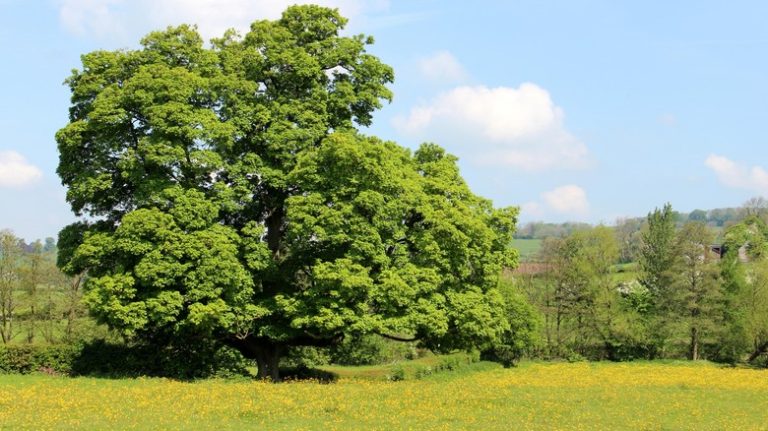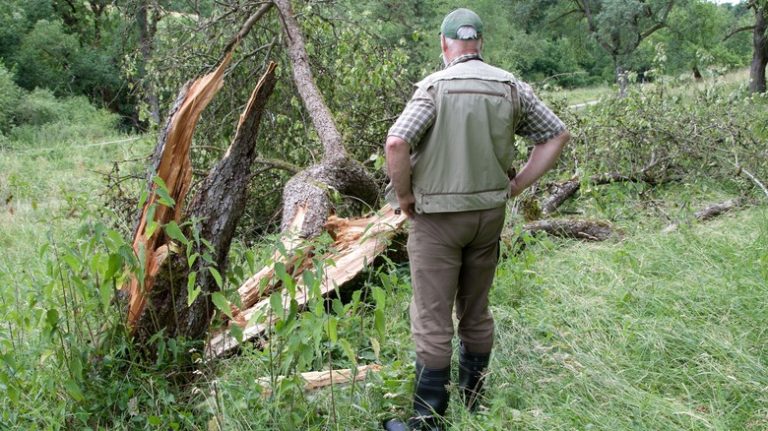Are you a gardening enthusiast with limited space or a balcony garden? Do you want to grow azaleas in pots and containers? In this article, we will guide you on how to ensure the health and beauty of your azaleas throughout the seasons.
Azaleas, known for their gorgeous, vibrant blooms, are popular choices for container gardening. These shrubs offer a wide variety of colors, sizes, and types, making it easier for you to choose the perfect azalea that complements your garden or outdoor space. Whether you have an east-facing deck or a backyard that gets plenty of afternoon light, azaleas can thrive in a range of conditions.
When it comes to potting your azaleas, selecting the right container is vital. It should provide sufficient room for rootball growth and proper drainage to avoid waterlogging. Adding a layer of stones or broken pottery at the bottom of the container helps with drainage. Additionally, choosing a disease-free potting mix will ensure that your azaleas stay healthy and disease-free.
Once you have planted your azaleas, proper care is essential to their overall well-being. These shrubs prefer moist soils, so regular watering is required. However, take care not to overwater, as this can lead to root rot and other diseases. During the growing season, azaleas benefit from a slow-release fertilizer applied according to the package instructions. Pruning should be done after the blooming season to shape the shrub and remove any weak or dead branches.
Winter is a crucial time for caring for your azaleas in containers. During frosty days, it is essential to protect them by moving them to a sheltered location or covering them with a frost cloth. Ensuring good airflow and avoiding crowded conditions will help prevent the build-up of molds and diseases. Remember to remove any fallen leaves promptly and keep the soil moist, as winter winds can quickly dry out the plant.
In conclusion, growing azaleas in pots and containers outdoors can be a rewarding endeavor. By choosing the right varieties, providing adequate light and moisture, and following essential care practices, you can enjoy vibrant and healthy azaleas in your garden or balcony year after year.
“Takeaways: Azaleas in pots and containers can thrive in a range of conditions and climates. Container-grown azaleas require less frequent watering than those planted directly in the ground. Proper care, including pruning, fertilization, and protection during winter, is essential for the health and beauty of your azaleas.”
Caring For Azalea Plants In Pots How To Care For A Potted Azalea Plant
Azaleas prefer being grown in pots and containers, as it allows for better control over their environment and care. When potting azaleas, it is important to choose a container that is just slightly larger than the rootball, as azaleas like to be slightly root-bound. Ideally, choose a pot that has drainage holes at the bottom to prevent waterlogging.
Before planting the azalea in the pot, it is important to properly prepare the container. This involves cleaning the pot and disinfecting it if it has been previously used. Fill the pot with a well-draining potting soil mix, ideally one that is formulated for acid-loving plants like azaleas. Ensure that the soil level is right below the rim of the pot.
Azaleas can be kept outdoors in the pot for most of the year, but they need some protection during the winter months. Whenever temperatures drop below freezing, the pot should be brought indoors or covered with a layer of mulch or burlap to protect the roots from freezing. Additionally, azaleas require a period of dormancy during winter for healthy blooming in spring. During this time, they should be placed in a cool, dark location such as a garage or basement.
When choosing the ideal location for your potted azalea, look for a spot that receives morning sun and afternoon shade. An east-facing location is often suitable. Azaleas do not like direct sunlight during the hottest part of the day, as it can scorch their foliage. Keeping them in a slightly shaded area helps to prevent this. If you notice the leaves turning yellow or brown, it may be a sign that the plant is getting too much sunlight.
Water azaleas in pots regularly to keep the soil moist. The potting soil should never dry out completely, but it should not be waterlogged either. Use rainwater or distilled water whenever possible, as azaleas prefer slightly acidic conditions. If tap water is the only option, let it sit for a day or two to allow the chlorine to evaporate.
Fertilize azaleas in pots regularly to ensure they have the necessary nutrients for healthy growth. Use a slow-release or liquid fertilizer specifically formulated for acid-loving plants. Apply according to the manufacturer’s instructions and avoid over-fertilizing, as this can harm the plant. Fertilizing every 4-6 weeks during the growing season is usually sufficient.
Azaleas benefit from regular pruning to maintain their shape and encourage more blooms. Prune them immediately after flowering, removing any dead or dying branches. This will promote new growth and help the plant maintain a compact, bushy shape. Prune any winter damage in early spring, before new growth begins.
Pests can be a problem for potted azaleas, especially aphids, lace bugs, and azalea caterpillars. Regularly inspect the plant for signs of infestation, such as discolored or distorted leaves. Treat infestations with insecticidal soap or a horticultural oil spray, following the instructions on the product label. If the infestation is severe, consider applying a systemic insecticide.
By following these care requirements, you can ensure that your potted azalea plants remain healthy and beautiful, blooming across the seasons. With a little extra attention during winters and regular care throughout the year, azaleas in pots can thrive and bring color to your garden or indoor space.
Growing Azaleas in Containers Getting Started
When it comes to growing azaleas, potted varieties are often the best choice, especially in climates where winters can be harsh. Container gardening allows you to easily move your azaleas to a protected area when needed, ensuring their survival during colder months.
To get started, choose a larger-sized pot or container with good drainage. Azaleas typically have shallow root systems, so a wider and shallower container is best. Make sure the pot has drainage holes to prevent waterlogged soil, which can lead to root rot and other diseases.
When choosing your azaleas, look for disease-free and healthy plants. Potted azaleas often come in a variety of colors, so you can choose the ones that best suit your taste and the overall look you desire for your garden.
Before planting your azaleas in the containers, prepare the potting mix by combining equal parts of peat moss, potting soil, and perlite or vermiculite. This mixture provides enough moisture retention and drainage for your azalea to thrive.
When preparing the container, add a layer of small rocks or gravel at the bottom to help with drainage. Then, partially fill the container with the potting mix, leaving enough space for the rootball of the azalea. Gently remove the azalea from its nursery container, and place it in the larger pot, making sure the top of the rootball is level with the surface of the potting mix.
Water the newly potted azalea thoroughly, ensuring that the potting mix is evenly moist. Azaleas prefer moist soil, but they do not like to sit in waterlogged conditions. Water whenever the top inch of soil feels dry to the touch, but be careful not to overwater.
Azaleas are known for their colorful flowers, and you can encourage blooming by providing them with the right care. They thrive in filtered sunlight, so place your pots in an area that receives morning or late afternoon sun, while providing shade during the hottest midday hours.
During the growing season, feed your azaleas with a balanced, slow-release fertilizer. Follow the package instructions for application rates and frequency. This will ensure that your plants receive the necessary nutrients to promote healthy growth and vibrant flowers.
Proper care also includes regular pruning to maintain the shape and size of your azaleas. Prune them right after they finish flowering, removing any dead or diseased branches, as well as any branches that are crossing or rubbing against each other.
If your azaleas encounter frosts or freezing temperatures in your area, consider protecting them with a layer of mulch or moving the containers to a protected location. This will help to insulate the roots and prevent cold damage.
Caring for azaleas in pots and containers can be a rewarding gardening experience. With proper care and attention to their needs, you can enjoy the beautiful blooms and lush foliage of these stunning plants throughout the year.
Azalea Plant Care in Pots Location
When caring for azaleas in pots, choosing the perfect location for your container-grown plants is vital. Azaleas prefer a spot with conditions that mimic their natural habitat. They enjoy a location where they can receive filtered sunlight, preferably in the morning or late afternoon. Midday sun can be too harsh for them.
If you live in a climate with hot summers or harsh winters, it is important to provide some protection for your potted azalea. A small, sheltered area close to your house or under a canopy or tree can help shield the plant from extreme weather conditions. This protection ensures that your azalea can thrive and continue to grow and bloom for years to come.
When preparing the potting soil for your azalea, it is important to choose a well-draining soil mixture. Azaleas prefer acidic soils with a pH level between 5.0 and 6.0. You can purchase potting soil specifically formulated for acid-loving plants or create your own mix using peat moss, perlite, and pine bark.
Fertilizing your potted azalea is also an important part of its care. Azaleas have shallow roots, so they require more frequent fertilization compared to plants in the ground. Apply a balanced, slow-release fertilizer every few weeks during the growing season, following the package instructions for dosage. This will provide the necessary nutrients for your azalea to thrive.
Watering your azalea correctly is crucial to its health. Azaleas prefer moist soils but do not like to sit in waterlogged conditions. Water your potted azalea thoroughly each week, allowing the excess water to drain out of the pot. Avoid overwatering, as this can lead to root rot and other issues.
Another aspect of location care for azaleas in pots is pruning. Pruning helps maintain the shape and size of the plant and promotes new growth and flowering. Prune your azalea after it finishes flowering in the spring. Remove any dead or weak branches, and trim back the overall shape to keep it neat and tidy.
Avoid placing your potted azalea in areas where it may encounter pests. Azaleas can be susceptible to pests like lace bugs and azalea caterpillars. Keep an eye out for these pests and take appropriate measures to control them, such as using insecticidal soaps or pesticides labeled for use on azaleas.
In conclusion, providing the right location for your potted azalea is essential for its care and well-being. By choosing a spot with the perfect conditions, protecting it from extreme weather, selecting well-draining soils, fertilizing correctly, watering appropriately, and taking care of pests, you can enjoy beautiful azalea plants in pots for years to come.
General Care for a Potted Azalea Plant
When it comes to caring for a potted azalea plant, there are a few key things to keep in mind to ensure its health and beauty. Proper care involves choosing the right container, providing suitable growing conditions, protecting against pests and diseases, and maintaining a regular care routine. Here are some general tips to help you care for your potted azalea:
Choosing the right container: Look for a container that is larger than the root ball of the azalea to allow for adequate growth. Ensure that the pot has drainage holes at the bottom to prevent waterlogging.
Providing suitable growing conditions: Azaleas thrive in well-drained, acidic soil. Use a mixture of peat moss, perlite, and a small amount of clay or moss to create a suitable growing medium. Place the azalea in an east-facing location outdoors, where it can receive morning sun and some shade in the afternoon. Avoid planting azaleas in areas prone to harsh winter frosts.
Protecting against pests and diseases: Regularly inspect the foliage for any signs of pests or diseases. Common issues include fungal diseases and sucking insects. If you notice any problems, use a suitable fungicide or insecticidal soap to treat the azalea and prevent further damage.
Maintaining a regular care routine: Azaleas require frequent watering, especially during hot summer days. Make sure the soil feels moist but not waterlogged. Fertilizing the azalea can help promote more blooms, especially when done in spring and summer. Use a balanced fertilizer specifically designed for azaleas and follow the instructions provided.
By following these general care guidelines, you can ensure that your potted azalea plant remains healthy, disease-free, and produces gorgeous blooms, whether it is a small house plant or a larger outdoor specimen.



